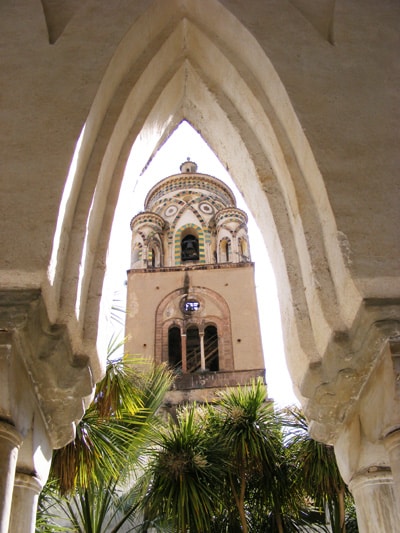Amalfi
Holiday homes & holiday apartments
Characteristic of this cheerful coastal town are the white houses scattered over the mountain slopes and the impressive cathedral.
In the town’s hinterland, the valley of the mills, with its many creeks and small waterfalls, is particularly charming.


Holiday homes & holiday apartments at Amalfi:
The heart of the Amalfi Coast
Amalfi – the small town which the world famous coast has been named after – is the best known tourist destination at the Costiera Amalfitana, besides Positano and Ravello. Characteristic of this cheerful coastal town are its bright houses scattered over the mountain slopes and its magnificent cathedral Sant’Andrea.
Probably founded in the 4th century AD by the Romans, it was from the 9th century on that Amalfi rose to become the powerful capital of Italy’s oldest maritime republic and it commanded a strong naval and merchant fleet.
In the 10th century, the coastal town was the hub of commerce between Orient and Occident. This close contact with the Arab world is still reflected today in the characteristic architecture of the coastal towns at the Amalfitana and the lemon crop which defines the landscape.
From the 19th century on, Amalfi became a favorite tourist destination, when mainly travelers from Germany and Great Britain discovered the town for themselves. A holiday home or apartment at the wonderful coastal town might be the perfect accommodation for your holidays on the Amalfi Coast!

Location
- Train station closest to Naples: Salerno (ca. 25 km off)
Sie sehen gerade einen Platzhalterinhalt von Standard. Um auf den eigentlichen Inhalt zuzugreifen, klicken Sie auf den Button unten. Bitte beachten Sie, dass dabei Daten an Drittanbieter weitergegeben werden.
Weitere Informationen
Accommodation at the beach or in the town center
- Holiday apartments and holiday homes at Amalfi in best location
Amalfi’s townscape is marked by the cathedral’s golden façade and its magnificent, majolica adorned campanile rising above the coastal town’s brick-red rooftops. From Piazza Duomo, an impressive, steeply rising stairway runs up to Duomo Sant’Andrea, which dates from the 10th century and harbors the relics of Saint Andrew.
A tour of the cathedral should absolutely include a closer look at the famous Chiostro del Paradiso, the magnificent cloister where, in former times, Amalfi’s nobility chose to be buried.
In Valle dei Mulini, above the town, over a dozen paper mills used to be powered by the river Canneto. Amalfi was probably the first town in Italy where paper was skimmed in the Middle Ages. It is quite interesting to visit “Museo della Carta”, which is found in one of the medieval paper mills and where you can witness the various stages of paper production.
Valle dei Mulini with its many creeks and small waterfalls is also very attractive for hikers.


Parking at Amalfi
- Tips for your holidays
As parking in the center of Amalfi is rather difficult, you should consider using the public means of transport for your journey. Public transport at the Amalfi Coast is very well organized.
Should you be traveling by car, you might, in most cases, find parking in one of the private garages, for which you have to count on a charge of up to € 20 per day.
